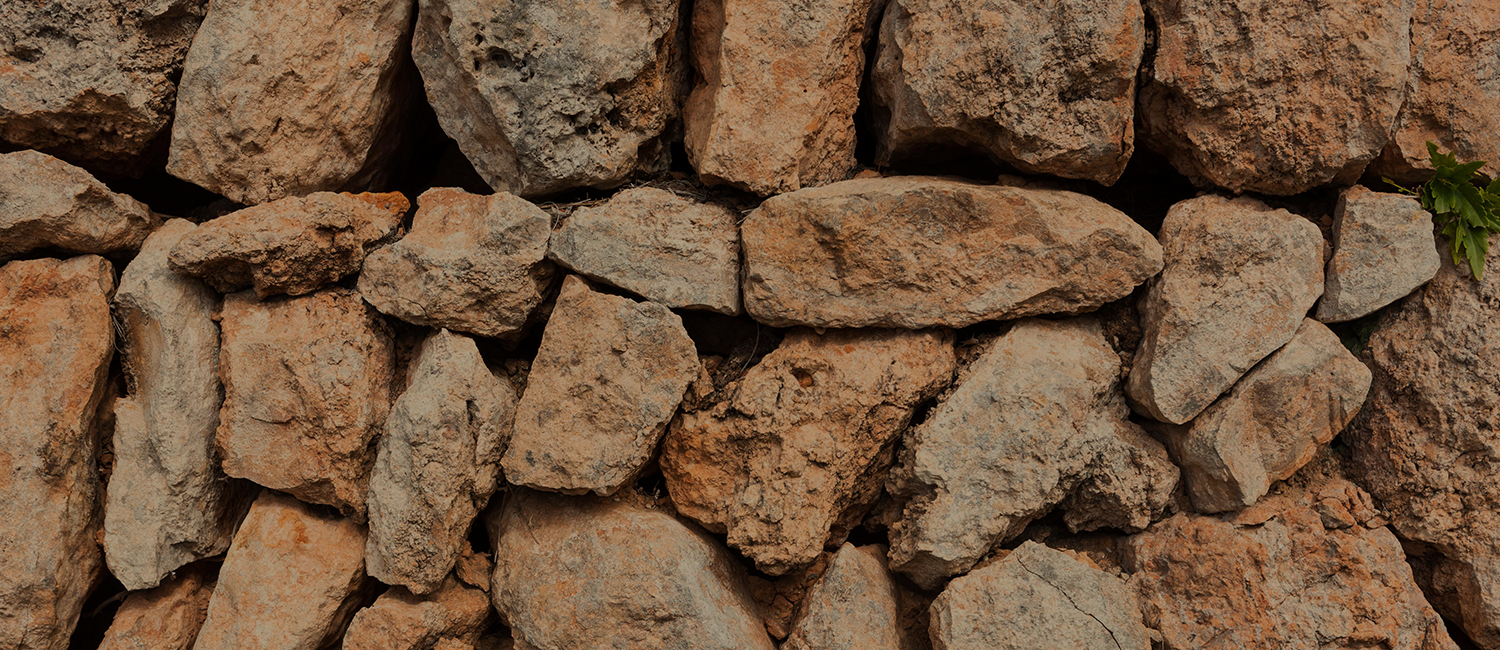
Heritage
13 de June de 2023• • indigenasdigitales
HERITAGE
The unchanging testimonies of the passage of time and cultures are many in Santa Maria, a town that is home to remarkable examples of civil and religious architecture, as well as representations of a more industrial era before tourism came to the island. Doorways with limestone and sandstone arches, walls and facings built with these fine materials, wells and cisterns, wrought ironwork – all provide the ingredients for manor houses, inns, mills, convents and an old railway station.
Casa de la Vila
Year built: 1566
- It was Santa Maria’s former Cúria del Batlle i Escrivania (Mayor’s and Clerk’s Office).
- It had a meeting room, a prison, a barracks and rooms for His Honour the Judge of the Royal Court.
- Renaissance façade, with a spacious portico with two lowered arches and two balcony windows.
- A monument of civil architecture.
- Restored in 1926.
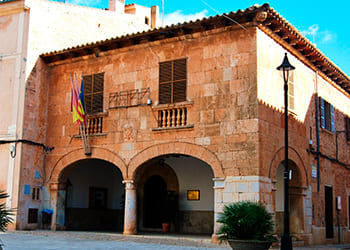
Posada de Son Llaüt
Year built: 1625
- It dates back to 1625 and was built by the Quitèria Ballester.
- Located at the crossroads of the roads to Muro, Sóller and Ciudad.
- It served as an inn, café and shop throughout the 19th century.
- Restored in 1882.
- Birthplace of Bartomeu Simonet i Canyelles, a distinguished son of the town of Santa Maria.
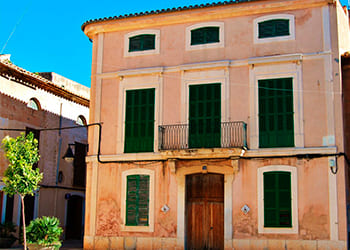
Ca s’Apotecari or Can Far
House built in 1710
- Property of the Far family.
- The apothecary’s office of Dr Mateu Calafat i Canyelles was located here.
- Manorial style building.
- Particularly noteworthy is the porch with decorated corbels and balconies.
- Cobbled roof with a natural stone bench and wrought iron railing.
- It currently houses the offices of the Santa Maria Town Hall.
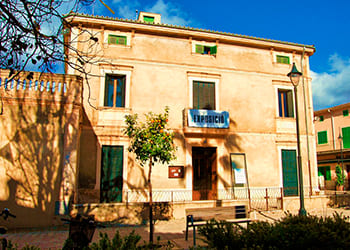
Cas Metge Rei
First record of the house dates back to the 1674
- It was the inn of the Mates de Son Roig de Coanegra family.
- The current house was built by Doctor Bartomeu Mates.
- It was purchased at the beginning of the 19th century by the Cabot family, also known as the Rey family, originally from Bunyola.
- The Cabot family home in Santa Maria was also known by the nickname Cas Metge Rei (King Doctor House), because of the three successive generations of doctors who had lived there.
- Minister Miquel Cabot, a missionary to America, was born here.
- In her will, Margalida Calafat i Cabot left the house to the Church of Santa Maria in 1983.
- In 1987, Mr Pere Rosselló i Far donated Cas Metge Rei to the Town Council of Santa Maria.
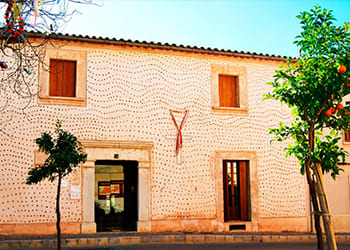
- The former ancestral home, remodelled and refurbished, now houses the Municipal Library and the Retirement Home.
- The façade, the only one of its kind in the town centre, is inlaid with black basalt stones.
- There is a large cross on the left side of the building, designed using the same black stones, which was used as a station during the Stations of the Cross during Lent.
- The doorway is neoclassical in style
Posada de Son Seguí
Year built: 1840
- It was owned by Josep de Olesa y Rosellón, lord of the Son Seguí estates.
- It served as the summer home of the lords of Son Seguí.

Parròquia de Santa Maria del Camí i Sagrat (jardí)
Parròquia de Santa Maria del Camí
14th century
- Old wooden church. Baroque style.
- Construction began in 1714 by the master builder Lluc Mesquida and was completed in 1737.
- Friar Albert Borguny created the altarpieces.
- The floorplan features a central nave with six chapels on each side.
- The left wing, known as the Roser Chapel or Fonda Chapel, is neoclassical in style.
- The bell tower was built between 1751 and 1753. The blue tiles were brought from Barcelona.
- The bells have names: Margalida and Bàrbara.
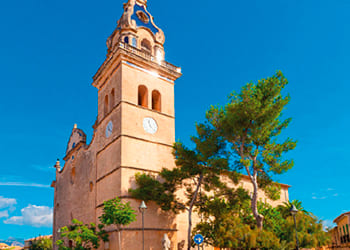
Sagrat (jardí)
- This was the first cemetery in Santa Maria.
- There is evidence that on 23rd November 1395, the parish priest of the parish church of Santa Maria, Bernat Mota, recorded that there was a cemetery facing the road to Muro.
Posada de Son Torrelleta - Son Berenguer
The current building dates to 1940
- Son Torrelleta, a Santa Maria estate, is located on the road to Coanegra.
- It belongs to the Pisà Torrelletes family.
- The façade is sgraffitoed to imitate ashlars.
- The raised terrace, enclosed by a balustrade supported by balusters, is decorated with geometric motifs and accessed via a section of passageway with three levels.
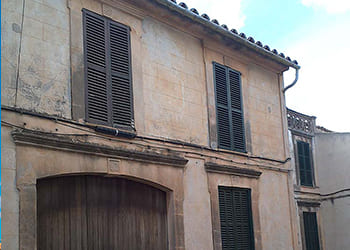
Plaça Robiol
Built in: late 18th century – early 19th century
- A group of buildings in various aesthetics and sizes, the square is built in the shape of the letter C, creating a singular spot: some of the buildings are homes, others are residential porches, the entrances to which are located on other streets.
Convent de Nostra Senyora de la Soledat o Convent dels Mínims
It was founded in 1682 and consecrated in 1683.
- It was the convent of the Order of Minim Brothers.
- The construction was headed by master builder Lluc Mesquida.
- The convent building features a rectangular floor plan and includes a large cloister and a Baroque-style church.
- The façade is divided into three levels: a ground floor and two upper floors.
- The entrance doorway has a segmental arch framed by concrete blocks and features a large, moulded run-off for rain, as well as a coat of arms.
- There are ten chapels inside and a small rose window in the apse, with the coat of arms of the Conrado family above the doorway.
- The Renaissance-style cloister has a square floor plan surrounded by a gallery with columns on pedestals and capitals with volutes that support segmental arches and an architrave roof.
- The cloister is stone-paved and preserves two ancient cisterns (a third, in the middle of the cloister, is new), with an octagonal base and a coat of arms of the Conrado family.
- The origin of the almond milk, a typical Christmas drink in Santa Maria del Camí.
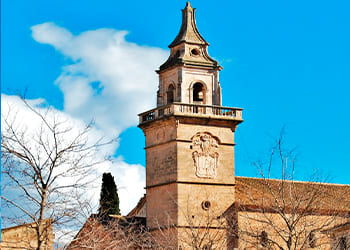
Els Hostals
From the early 1680s
- Santa Maria was founded in the early 1680s.
- It was located next to the road that connected Ciudad and Inca, based on the 17th-century settlement of the Caballería de Santa Maria del Camí.
- It was named after the number of inns that existed in the area.
- The first reference to the hostalet (hamlet) of Santa Maria on the roads to Inca and Bunyola appears on 22 January 1639.
- There were already two inns by 1680, one of which was known as L’hostal de’n Morell (Can Calet), which was on the road to Sóller (Carrer Llarg).
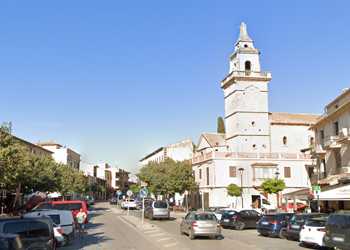
- With the establishment of a village around the square and the formation of the town centre with the inns, the town at the end of the 17th century was divided into two parts (La Vila and Els Hostals) without a town planning process geared toward joining them together.
- The only connecting road for two centuries was Carrer Llarg (the old Camino de Sóller or Camino de Bunyola).
- It wasn’t until the 19th and 20th centuries that the two parts were finally joined together.
S’Estació
Opened in 1875
- The railway station was inaugurated on 25 February 1875.
- It was built in the same style as the Binissalem station.
- The façade is stone paved and highlighted by cornices, edges and openings.
- This station was the start of the Santa Maria-Felanitx line, which connected the centre and south of the island.
- It was closed down by state-owned company FEVE in 1967.
- The site of the former track and the bridge over which it ran to Santa Eugenia can still be seen today.
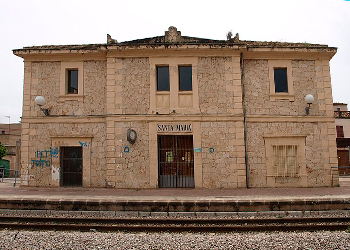
- The company Servicios Ferroviarios de Mallorca ceded it to the Santa Maria Town Council.
- It is now a cultural, social and recreational centre.
Posada de Son Güia Son Nét
In the Vall de Coanegra
- Son Güia, an estate located in the Vall de Coanegra. Between Son Berenguer, es Cabàs and Son Oliver.
- The house was owned by Pere Antoni Villalonga Güia in 1685.
- It had a mill.
- Comte Segnier lived there in the early 20th century. He died there in 1915.
- It was bought by Joan Amengual in 1890. It still belongs to the Amengual family today.
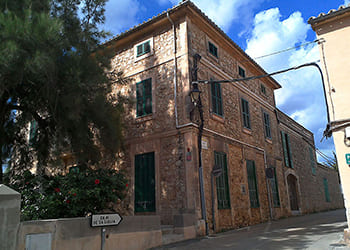
Hort i Molí de Can Salvà
19th-century manor house
- Owned by the Salvà family.
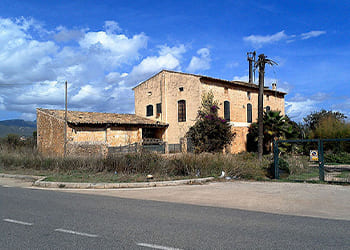
Plaça de Ca n’Orell
First quarter of the 20th century
- It was known as Plaça Reial and in the 20th century as Plaça del General Goded.
- It was part of the house of the Ca n’Orell estate (a family from Bunyola).
- The Orell family sold their land to the Santa Maria Town Hall to build a square between the station and the road to Inca.
Sa Vileta - Baronia de Terrades
La situación, el transporte público y la buena comunicación de Santa Maria del Camí, la oferta complementaria que prestan los negocios del municipio, juntamente con las diferentes instalaciones de que dispone el ayuntamiento, hacen que este municipio sea un buen lugar para la realización de congresos y eventos de pequeño y medio formato. Para más información o para la contratación de los espacios municipales puedes contactar con el ayuntamiento mediante el teléfono +34 971 620 131 o a través del siguiente formulario web.
Former Muslim farmstead
- Former Muslim farmstead called Albiar (1246).
- Bernat de Santa Eugènia owned the estate.
- Bernat de Santa Eugènia gave it to Jaume de Terrades as a gift for his good services rendered in the Spanish conquest, under the title of Barony.
- The farmstead bordered the common quintanas, the Consell garrigues (scrubland) and the roads to Inca and Muro.
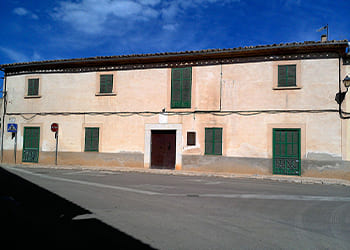
Plaça de Son Fango
From the 1930s onwards
- Located on the farmland of Ca n’Andria.
Passatemps i Camí de Passatemps
15th century
- Passatemps is a small area in Santa Maria del Camí that stretches from the northwest side of the Puig de Son Seguí to the road to Sencelles.
- Former Muslim farmstead.
Plaça de Can Fuster
The first records date back to 1335 (14th century).
- The house of the Curia of the Caballería de Santa Maria del Camí (house No. 1) was located here.
- Located at the entrance to the Camí de Passatemps.
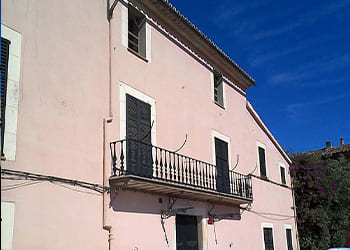
Sèquia Reial de Coanegra
Dates back to Roman times
- Civil engineering work located in the Vall de Coanegra, in Santa Maria del Camí, which carries water from the Font de Son Pou to the town centre.
- It dates back to Roman times.
- The first written regulation that has survived dates back to 7 May 1503.
- It is built with stone and lime mortar and lined with hydraulic cement.
- It runs parallel to and close to the Coanegra stream.
- When it was built in the 17th century, in the urban centres of La Vila and Els Hostels, the water from the Coanegra ditch became even more necessary, since public wells were no longer enough to supply the population.
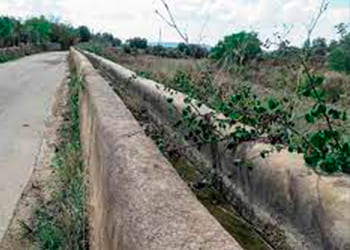
- The water reached the road to Inca and there was a cistern near the houses of Son Dolç.
- An agreement was reached in 1743 to extend the ditch to the Plaça de la Vila, where a reservoir was built.
Sa Quintada de Terrades
Used for cattle grazing
- Located near the houses of the Son Barca, Terrades, Can Cerdó and Son Llaüt estates.
- Used for cattle grazing and drinking.
Ca Ses Monges o Can Mates
Santa Maria del Camí also boasts the public estate of Ca Ses Monges or Can Mates, which was recently restored by the Town Council. This is an iconic space, located in the Vall de Coanegra and part of the Serra de Tramuntana mountain range, declared a UNESCO World Heritage Site. This estate is notable for both its environmental and architectural values. It also has a cabin where families, friends and students can come to have a good time, enjoy the surroundings and spend the night. The municipal ordinance regulating the use of the facilities on the estate, as well as the tax ordinance on the fees for using the estate, have recently been approved.
Contact information
2023 Ajuntament de Santa Maria del Camí – Plaça de la Vila, 1. 07320
Santa Maria del Camí. CIF P0705600E. Tel: 971 620 131. Fax: 971 140 337

Main Menu



